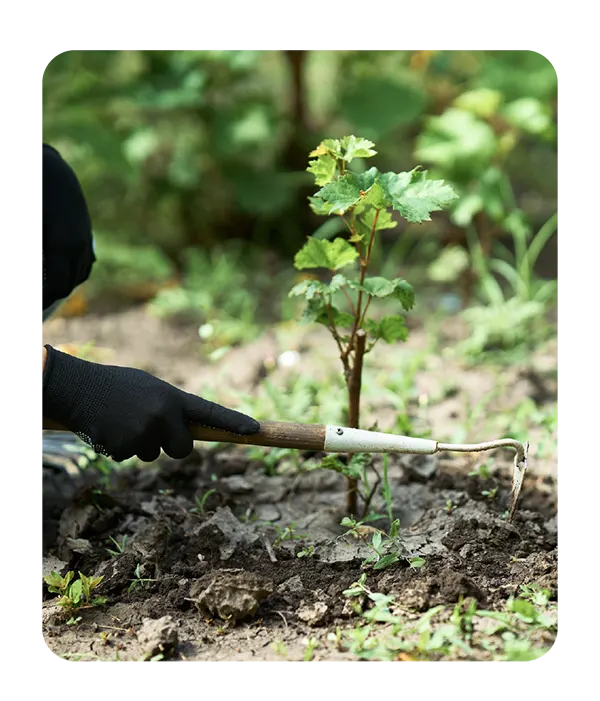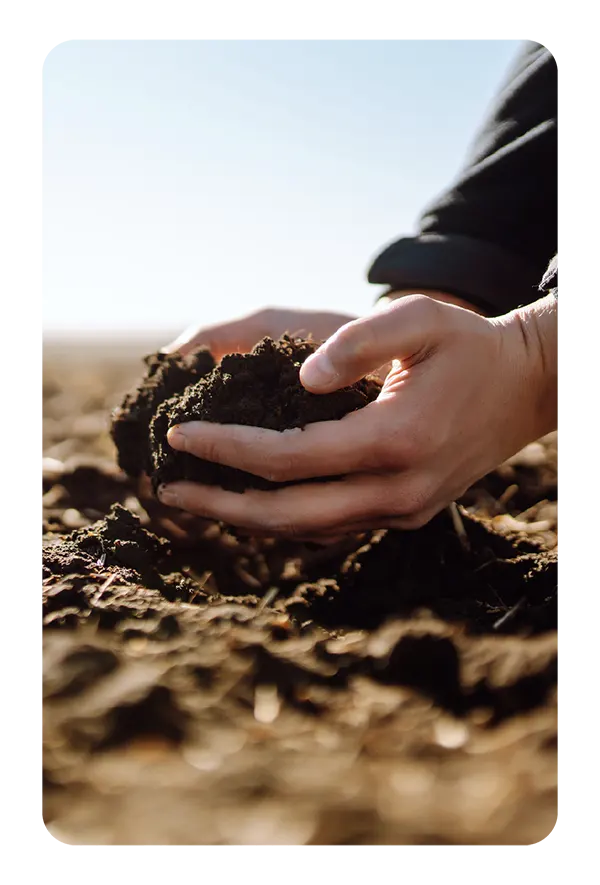SUSTAINABILITY
All of our products maintain the unique environmental benefits of Industrial Hemp.
- Industrial hemp is a naturally drought-resistant plant, so it needs very little irrigation and can be planted in agroclimatic zones that are not recommended for other food crops.
- It is naturally resistant to pests, so it can be grown avoiding chemical pest control methods.
- It has very deep roots, capable of pumping surface nutrients present in layers which the ones of other common food crops cannot reach, such as cereals, legumes or vegetables. This makes it an undemanding crop in terms of water and nutritional requirements, as well as being a great rotation crop as it favors the availability of nutrients at shallower depths. Rotating hemp with other crops such as wheat has been seen to improve yields.
- Its roots are capable of absorbing numerous contaminants from the soil, such as heavy metals or traces of pesticides, which is why it is considered a phytoremedial crop.
- Both its high growth rate and high photosynthetic efficiency make it a great transformer of atmospheric inorganic carbon (CO2) into organic carbon (carbon molecules that make up the plant itself, such as cellulose). For this reason, it is considered one of the crops that best capture CO2.
- This great CO2 absorption capacity, added to the fact that it is a non-fossil raw material and it does not come from forest plantations, helps to reduce the carbon footprint of those companies that introduce our products into their production chain, whatever the final product area could be.


Green & Growth® LignoCellulosic Fibers
100 % Hemp
The environmental benefits of our fibers are manifold, derived both from the raw material itself and from its processing:
- They do not come from forest resources neither from inhomogeneous agricultural residues nor from any toxic urban residues.
- They come from an annual herbaceous plant, industrial hemp, with one of the highest cellulose contents in the plant kingdom, which also provides grain of great nutritional quality.
- The processing method to obtain our products is environmentally friendly.
Green & Growth®
Biochar 100% Hemp
- Green & Growth biochar has important environmental benefits.
- Some of them, as it occurs with our lignocellulosic fibers, derive from the benefits of their starting plant material, hemp. These environmental benefits from the use of hemp as a raw material are included in the product description.
- Biochar establishes a complex organic-mineral relationship by interacting and facilitating the relationship between plant roots as well, microorganisms and the rest of the organic matter, proteins and other nutrients dissolved in the soil water.
- Biochar improves the retention of water and its nutrients, by avoiding leaching and by favoring the establishment of beneficial microbiota communities in its porous structure. This increases the natural regeneration and regulation capacity of soil, improving also the bioavailability of nutrients and fertility in general, which reduces the need for irrigation and fertilization of the soil.


- The production method used in our biochar reuses syngas produced during the pyrolysis of hemp biomass itself to feed back into the oven and to achieve higher temperatures. This prevents this syngas from being emitted into the atmosphere during the production of our biochar, in addition to saving the use of other fuel sources.
- During pyrolysis, bio-oils secondary to biochar production are recovered. This bio-oil is being investigated for its subsequent purification and its use in products such as wood vinegar or wood tar. Wood vinegar has an insect repellent value in agriculture; on the other hand, wood tar has a therapeutic value, being included in numerous ointments, as well as having an industrial value for its adhesive, sealing or waterproofing properties in similar products such as varnishes, flooring, and waterproofing.
- Finally, biochar is considered one of the choice methods to sequester carbon, hence there are numerous international programs, such as RECSOIL from FAO, aimed at recarbonizing soils by adding biochar in an attempt to mitigate the effects of climate change, as well as its multiple benefits when it happens to preparing soil to resist inclement weather.
- Plants take inorganic CO2 from the atmosphere to convert it, thanks to the energy produced during photosynthesis, into organic carbon molecules (organic carbon). When these plants die and rot or burn, they release this organic C back into the atmosphere as CO2. On the other hand, if this plant biomass is pyrolyzed, its organic C remains fixed in the form of biochar and it can be incorporated into the soil. While in the soil, biochar provides all the benefits listed in section B and also acts as a long-term carbon reservoir. It is the refractory capacity of the carbon fixed in the biochar which makes this carbon remain undisturbed in the soil for thousands of years, mitigating, in this way, the negative effects of carbon excess in the atmosphere.
